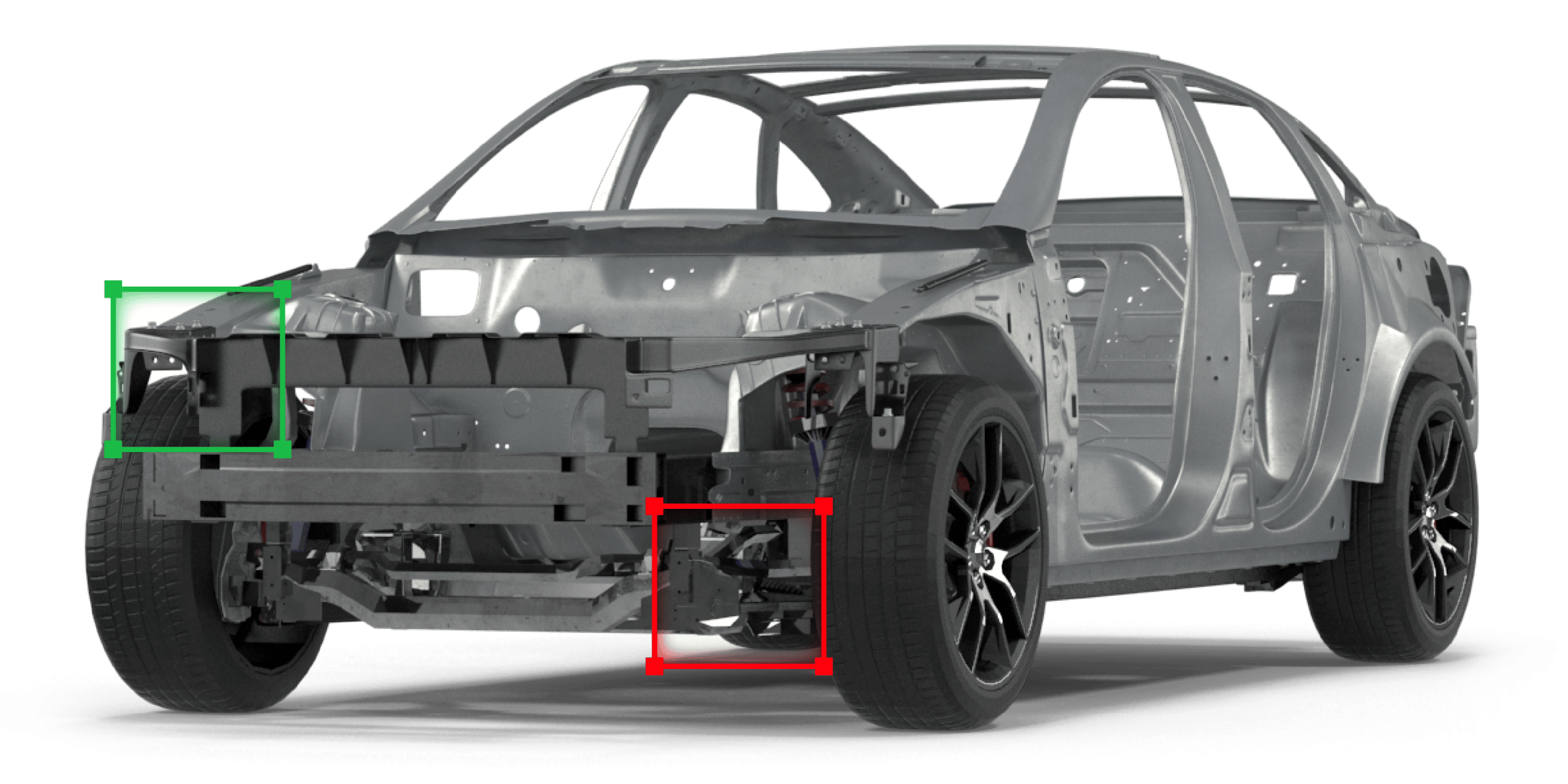AI-Powered Machine Learning: A Comprehensive Guide
AI-Based Machine Learning: A Comprehensive Guide
Dive into Matroid’s comprehensive guide on machine learning, showcasing our advancements in computer vision, security, and AI-driven innovation. Experience firsthand how our expertise is reshaping industries and guiding businesses towards a transformative future.

What is machine learning?
Machine learning (ML) is a subset of artificial intelligence that empowers computers to improve their performance on tasks by learning from data, rather than being explicitly programmed. It revolves around the idea of feeding algorithms data, allowing them to analyze patterns and make decisions, predictions, or classifications based on that information.
At its essence, machine learning revolves around algorithms learning patterns from data. But to truly grasp its intricacies, one must familiarize themselves with its core concepts. An ‘algorithm’ in this realm refers to the set of rules or procedures a machine follows to make predictions or decisions. The ‘model’ is what you get after you feed data to an algorithm to learn from, encapsulating what it has learned. The ‘training’ phase involves providing an algorithm data with answers, letting it adjust its internal parameters to learn. In contrast, the ‘testing’ phase assesses the model’s performance on unseen data. These foundational concepts serve as the bedrock on which the vast landscape of machine learning is built.
Whether it’s predicting stock market trends, diagnosing diseases earlier with medical imaging, or recommending movies on streaming platforms, ML algorithms play a pivotal role. The value proposition is clear: machine learning models can uncover intricate patterns in massive datasets, often surpassing human capabilities in specific tasks.
The History
The Evolution of Machine Learning

The origins of machine learning trace back to the early aspirations of artificial intelligence. In the mid-20th century, pioneers dreamt of creating machines that could simulate human intelligence. The initial forays involved rule-based systems, where machines were manually programmed to behave intelligently. However, as the limitations of this approach became evident, a new paradigm emerged: Instead of instructing machines on how to act, why not let them learn from data?
This shift laid the groundwork for what we recognize today as machine learning. Key landmarks, such as the invention of the perceptron in the 1960s and the popularization of backpropagation in the 1980s, catalyzed the evolution of machine learning.
In the modern digital era, machine learning stands at the epicenter of numerous technological advancements. The ubiquity of data, from our online habits to sensors everywhere, has given machine learning algorithms ample material to learn from. As a result, machine learning driven systems have permeated various sectors, be it finance, healthcare, or entertainment.

Machine Learning in Healthcare
AI Unleashing Efficiency & Accuracy
Machine learning has become a beacon of hope and efficiency in the healthcare sector. Advanced algorithms now assist in disease prediction, often detecting conditions at early stages when they are more treatable. For instance, ML-driven medical imaging can identify anomalies in X-rays or MRIs with incredible precision, enabling timely interventions. Beyond diagnostics, drug discovery, a traditionally time-consuming and expensive process, has been accelerated with predictive models suggesting potential compounds for new medications.
Machine Learning in Retail
Logistics Managed with Machine Learning
A sector that constantly evolves with consumer preferences, retail leverages machine learning to stay ahead of the curve. Recommendation systems, driven by algorithms, curate shopping experiences tailored to individual preferences, enhancing user engagement and boosting sales. On the logistical side, inventory management systems harness ML to predict stock requirements, ensuring optimal stock levels and reducing overhead costs.

Machine Learning in Transportation
Enhanced Safety for Autonomous Drivers
Transportation is undergoing a revolution, with machine learning at its helm. Autonomous vehicles, once a dream, are becoming a reality, with algorithms processing vast amounts of sensory data in real-time to navigate roads safely. Furthermore, route optimization tools, powered by ML, ensure efficient logistics and timely deliveries, reducing costs and environmental impact.
Machine Learning in Manufacturing
Time and Money Saved Safety Supported
Machine learning is revolutionizing the manufacturing sector by optimizing production processes and improving overall efficiency. Predictive maintenance models use historical data to anticipate equipment failures, minimizing downtime and reducing maintenance costs. Smart manufacturing systems employ ML algorithms to analyze real-time data from the production line, enhancing quality control and identifying potential issues before they escalate. This proactive approach contributes to increased productivity and resource utilization in the manufacturing industry.Healthcare
Retail
Transportation
Manufacturing
The Benefits of AI-Powered Machine Learning

Informed Decision Making
With machine learning algorithms deciphering vast datasets, businesses and organizations can derive actionable insights that often surpass human analytical capabilities. This data-driven approach not only sharpens accuracy but also unveils previously hidden opportunities, providing a decisive competitive edge.

Customized User Experience
The ripple effect of these operational enhancements leads to a paradigm shift in user experience. Machine learning crafts tailored experiences, from recommendation systems in e-commerce platforms to curated content on streaming services. As users encounter bespoke experiences tailored to their preferences, their engagement deepens, fostering brand loyalty and satisfaction.

Operational Efficiency Through Automation
As machine learning refines decision-making, it concurrently revolutionizes operational efficiency through automation. Tasks that once consumed extensive manual labor are now seamlessly automated, ensuring accuracy and swiftness, especially in sectors where real-time data processing is paramount. With routine tasks being taken over by algorithms, human resources are liberated to focus on more strategic initiatives, thus amplifying overall productivity.

Scalable Solutions
The inherent adaptability of machine learning models also ensures they remain robust and effective, even in the face of burgeoning datasets. Where traditional systems might buckle under the sheer volume of big data, ML models, especially those fortified by cloud platforms, scale and evolve. This dynamic adaptability ensures that as data landscapes shift and expand, machine learning systems remain attuned, always capturing the most recent patterns and nuances.
The Future of Machine Learning
Machine learning, while already transformative, continues to evolve at an unprecedented pace. As technology advances and our understanding deepens, new trends and paradigms emerge, hinting at an even more integrated and intelligent future. One of the most tantalizing prospects on the horizon is Quantum Machine Learning. Quantum computers, with their ability to process vast amounts of information simultaneously, have the potential to revolutionize the field. By harnessing the principles of quantum mechanics, machine learning algorithms can be exponentially faster, tackling problems deemed insurmountable for classical computers.
Federated Learning, another burgeoning trend, is redefining the way we think about data collection and training. Instead of centralizing data, models are trained across multiple devices or servers, allowing data to remain local. This not only enhances privacy and security but also allows for more diverse and representative model training.
The push for transparency in machine learning models has given rise to Explainable AI (XAI). As ML models become integral in decision-making processes, understanding their rationale becomes crucial. XAI aims to make machine learning models more interpretable and transparent, ensuring stakeholders can trust and understand the decisions being made.
Beyond the technical advancements, the intersection of AI and sustainability is a trend that holds promise not just for the tech industry but for the planet. Machine learning models are being used to monitor environmental changes, optimize renewable energy usage, and even predict natural disasters. As concerns about climate change intensify, the role of ML in crafting sustainable solutions grows ever more significant.
THE DIFFERENCE
MATROID’S SOLUTION
As we’ve journeyed through the intricacies of machine learning, from its foundational concepts to its vast applications and future potential, it’s evident that machine learning is more than just a technological trend. It’s a transformative force, reshaping industries, influencing decision-making, and offering solutions to some of the most pressing challenges of our time.
At Matroid, we’re pioneering the future by pushing the boundaries of machine learning, a transformative technology reshaping countless industries. Machine Learning’s profound capability to process and glean insights from extensive data sets has led to groundbreaking innovations, especially in domains like computer vision. By merging computer vision with machine learning, we’re enabling systems to interpret and respond to visual stimuli with unmatched accuracy, finding applications in diverse areas from manufacturing quality control to real-time surveillance.
As industry leaders, Matroid is dedicated to not only addressing today’s technological challenges but also pioneering tomorrow’s innovations. Our expertise spans across predictive analytics, natural language processing, computer vision, and more. For businesses ready to harness the transformative power of machine learning, Matroid offers the expertise, tools, and vision to guide them towards a future defined by unparalleled innovation and growth. Request a demo

Machine Learning FAQ
What is the difference between AI and machine learning?Expand
Artificial Intelligence (AI) is a broad field of study focused on creating machines that can perform tasks that typically require human intelligence. It encompasses various subfields, including robotics, natural language processing, and expert systems. Machine learning (ML), on the other hand, is a subset of AI that allows systems to learn from data. Instead of being explicitly programmed to perform a task, a machine learning model uses patterns and inferences from data to make decisions and predictions. In essence, while AI is the overarching goal of autonomous machine operation, ML is the method we’re using to bring that vision to life.What is an example of machine learning?Expand
An example of machine learning is the recommendation systems used by online streaming services like Netflix or Spotify. Based on a user’s watching or listening history, the ML algorithms predict and recommend new shows, movies, or music that the user might enjoy. Over time, as the system gathers more data about a user’s preferences, its recommendations become increasingly accurate.What is machine learning versus deep learning?Expand
Machine learning and deep learning are closely related, with deep learning being a subset of machine learning. While both involve training models on data, they differ in terms of complexity and approach. Machine learning models can use a variety of techniques, from linear regression to decision trees. Deep learning, on the other hand, specifically employs neural networks with multiple layers (deep neural networks) to analyze various factors of data. Deep learning models are especially powerful for tasks like image and speech recognition because of their ability to process vast amounts of complex data and automatically extract features.Why is machine learning important?Expand
Machine learning is pivotal in today’s data-driven world because of its ability to turn massive datasets into actionable insights. As the volume and variety of data grow, traditional algorithms often fall short in extracting meaningful information. Machine learning models can adapt to changes and learn from new data, making them particularly effective at tasks like fraud detection, market forecasting, and personalized marketing. Their adaptability and predictive power offer businesses, researchers, and organizations unparalleled capabilities in decision-making, forecasting, and automation.How does machine learning help the world?Expand
Machine learning has a profound impact on various sectors and challenges around the world. In healthcare, ML algorithms assist in early disease detection and personalized treatment plans. In finance, they help in fraud detection and algorithmic trading. Environmental scientists use ML to predict natural disasters, monitor climate change, and optimize renewable energy sources. Moreover, in the realm of transportation, machine learning aids in optimizing routes, improving vehicle safety, and laying the foundation for autonomous vehicles. These applications, among numerous others, showcase machine learning’s potential to revolutionize industries, address global challenges, and improve the quality of life.